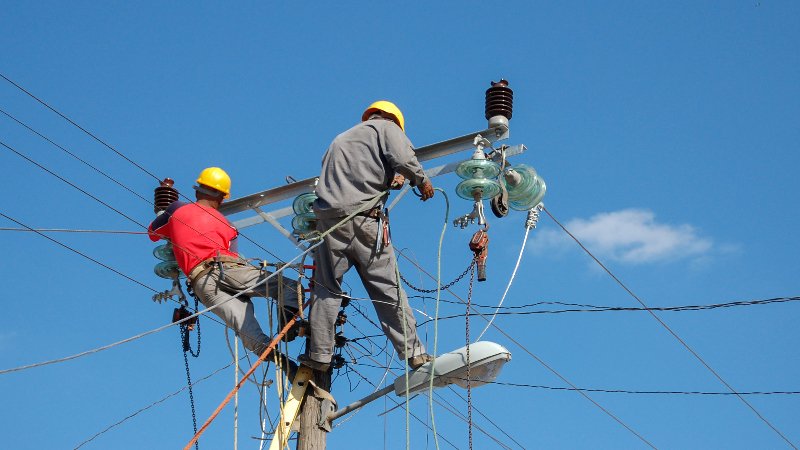Modern utility services are the foundation of safe, resilient communities. Beyond delivering reliable electricity, water, and gas, the industry now leads in adopting technology, strengthening infrastructure, and engaging the public. Organizations like Divergent Alliance provide professional utility services essential for upgrading community systems, reducing risks, and enhancing everyone’s quality of life.
As utility providers embrace innovation, safety standards and collaborative response efforts strengthen, ensuring prompt action in emergencies and everyday situations. Strong infrastructure and informed, engaged citizens are two sides of the same coin—both are necessary for safer neighborhoods and regions.
New challenges, like sophisticated cyber threats and changing climate conditions, require utilities to adapt rapidly. Integrated technology and mindful infrastructure updates allow utilities to prevent outages and hazards and help communities recover quickly when disruption does occur.
This shift toward proactive, community-oriented utility management sets the stage for more adaptive cities and towns, where public safety is prioritized through ongoing investment and education.
Infrastructure Upgrades That Strengthen Community Safety
Modernizing aging infrastructure is a defining priority for utility providers aiming to enhance community safety. For example, the Southern California Gas Company (SoCalGas) has improved reliability and reduced risk by converting over 34,000 mobile home park spaces to direct utility service.
The vast network of utility lines and service connections across the U.S. demands continuous inspection, replacement, and upgrading to prevent potential failures or hazardous incidents.
Building Resilience Through Modern Utility Systems
Programs that target outdated pipes, old wiring, and vulnerable substations are critical in lowering the risks of fire, water contamination, or gas leaks. These upgrades protect neighborhoods while fostering consumer trust in the system, making utility services safer and more dependable.
According to Utility Dive, increased investment in updating grid infrastructure decreases the frequency and duration of outages, helping communities avoid daily disruptions and emergencies.
How Technology Is Transforming Utility Operations
Technology is reshaping utility management by improving safety, efficiency, and response times. Digital platforms and advanced analytics allow providers to monitor networks in real time, predict demand spikes, and prioritize maintenance tasks.
CPS Energy’s partnership with Oracle to create a unified cloud platform is one example of how utilities streamline data management and enhance rapid customer support—two key elements of safer service delivery.
Smart Grids and Predictive Maintenance
The advent of smart grids and digital meters has transformed how utilities detect faults or outages and communicate with customers. Predictive analytics and automated alerts help utilities deploy their repair teams quickly, minimizing risk and restoring normalcy faster.
These tools also empower utilities to manage resources better and preemptively address vulnerabilities, improving the resilience of entire communities.
Cybersecurity Strategies That Protect Critical Utilities
With advanced technology comes the critical need for robust cybersecurity. As infrastructure digitizes, utilities face growing threats from cyberattacks targeting operational technology and customer data. Regulatory bodies like the Pennsylvania Public Utility Commission have called for regular vulnerability assessments and information-sharing protocols to keep these systems secure.
The risk is ever-evolving, with cyberattacks on energy and water supply systems potentially affecting millions simultaneously, as The New York Times highlighted.
Proactive Defense Against Cyber Threats
Robust protection strategies include isolating critical control networks, routinely updating software, and training staff to identify new threats. Utilities also collaborate closely with government agencies and cybersecurity experts to share real-time intelligence and best practices—significantly reducing the risk and potential impact of cyber incidents.
Strong Utility–Government Partnerships for Emergency Response
Effective crisis management often depends on close collaboration between utility providers and municipal agencies. By creating platforms for information sharing—such as online portals to prioritize power restoration for essential community services—utilities can coordinate recovery efforts swiftly and efficiently.
This partnership streamlines resource deployment during storms, wildfires, or widespread outages, ensuring that emergency shelters, hospitals, and vulnerable populations receive urgent attention.
Building Mutual Support Frameworks
Joint training exercises and disaster simulations help utilities and government teams prepare for coordinated emergency responses. Experience shows that these frameworks can reduce recovery times and improve outcomes for affected communities.
Strengthening Community Preparedness Through Education
Public safety is a shared effort. Utilities increasingly empower residents through education campaigns and outreach. Programs that encourage residents to call before digging or provide free information on the location of underground cables have significantly reduced the number of accidental outages and injuries.
Empowering the Public Through Transparency
Easy-to-use communication channels help citizens report outages, hazards, or suspicious activity. Webinars, public service announcements, and educational materials empower communities to understand their role in maintaining safe utility environments.
Engaged residents lead to faster hazard reporting, smoother repairs, and safer neighborhoods overall.
Future-Focused Utility Innovations for Safer Communities
Resilience and innovation shape the future of utility services. Many providers are adopting microgrids, distributed energy resources, and battery storage systems to manage fluctuating demand and extreme weather conditions.
Guidehouse reports that utilities are increasingly integrating renewable energy, building electrification, and other resilience strategies. These efforts help protect communities from disruptions while also supporting long-term sustainability goals.
Customer-Centric Safety Strategies
Personalized services, advanced monitoring, and rapid outage notifications are becoming the standard. As these technologies mature, communities will benefit from greater system redundancy, greener energy options, and a more transparent relationship with their utility providers.
Final Thoughts
Utility services play a central role in building safer communities. Through infrastructure modernization, advanced technology, strong cybersecurity, and collaboration with government agencies and residents, utilities are reshaping community safety from the ground up.
Continued investment and public education help communities face new threats with greater resilience and confidence. These efforts pave the way for safer, more reliable, and more sustainable living for everyone.
See Also: FSM Software for Field Service Business
